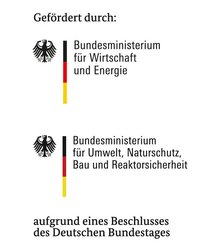KRESSE
Critical Mineral Resources and Material Flows during the Transformation of the German Energy Supply System

According to targets set by the German Federal Government, renewable energies are to account for 18 per cent of the gross final energy consumption by 2020, rising to 60 per cent by 2050. If only electricity generation is considered, the proportion of gross electricity consumption contributed by electricity from renewable energy sources is to increase to 80 per cent by 2050. However, it is not only energy supply or climate protection criteria that play a crucial role in realising the development of renewable energy sources - a comprehensive sustainability assessment of the individual technologies must be made taking into account a variety of criteria. Such criteria include short- and long-term cost considerations, energy security, the impact on land use and the countryside, social acceptability, environmental impacts and resource requirements.
When it comes to resource assessments, it is recognised that the overall resource utilisation of an energy system is generally considerably lower if it is based on renewable energies (albeit not primarily on biomass) rather than on fossil fuels. However, this does not necessarily mean that renewable energies must always be considered as being unproblematic with regard to the use of resources. In particular, limited research has been undertaken on the consumption and long-term availability of minerals, usually required in the manufacture of energy converters and infrastructure. In this connection, the availability of rare earth elements, such as indium, gallium, lanthanum and neodymium, and other raw materials that play a significant role, such as nickel and vanadium, is of particular interest.
The present study attempts to close the previous assessment gap, contributing to the holistic sustainability analysis of renewable energies. The aim of the study was to provide an indication as to whether and how the transformation of the energy supply system can be shaped more resource-efficiently with a high degree of expansion of renewable energies.
To achieve this, the study involved investigating which "critical" minerals are relevant in Germany for the production of technologies that generate electricity, heat and fuels from renewable energies in a time perspective up to 2050. In this context, the assessment of being "critical" comprises the long-term availability of the raw materials identified, the supply situation, recyclability and the environmental conditions governing their extraction.
Overall assessment
The study shows that the geological availability of minerals does not generally represent a limiting factor in the planned expansion of renewable energies in Germany. It may not be possible, however, for each technology variant to be used to an unlimited extent.
Assessment as being non-critical
Of the technologies investigated, the following have proven to be most probably non-critical with regard to the supply of minerals:
- Use in the electricity sector: solar thermal energy, hydropower, wind turbines without rare earth magnets, silicon-based crystalline photovoltaics
- Use in the heating sector: geothermal energy, solar thermal energy
- Infrastructure: electricity grids, specific types of electricity storage devices, alkaline electrolysis and solid oxide fuel cells
The supply of minerals in the use of biomass and biofuels in the electricity, heat and transport sectors cannot be classified as being critical either. However, the availability of biomass itself and the associated problems, especially land use and competitive usage, depending on the type of biomass, would have to be taken into account. These are not within the scope of this study though.
Assessment as being critical
Specific elements or sub-technologies of wind energy, photovoltaics and battery storage were identified as being critical with regard to the supply of minerals. However, there are non-critical alternatives to these technologies that could increasingly be used in future or that already dominate the market.
Assessment not yet possible
With regard to geothermal electricity generation, a relevant demand for various critical alloying elements cannot at least be ruled out in the case of a major expansion. There are several arguments in favour of assessing geothermal electricity generation as "relevant" with regard to its future demand for steel alloys (also compared to wind power): such arguments include the high demand for specific steel in deep geothermal energy plants and the poor substitutability of alloys, due in part to the high technical demands placed on the materials used. However, the data base is as yet inadequate for forecasting this demand reliably, meaning that no conclusions can be drawn at present for geothermal energy.
Conclusions
Whilst the heating and transport sectors are most probably not considered as being critical in the event of the direct use of renewable energies, attention needs to be paid to the electricity sector with reference to the research question raised. Even if the availability of minerals for the relevant technologies is not a problem, potential supply risks owing to dependencies on a few supplier countries and competitive usages should be borne in mind.
One central aspect of the policy recommendations derived from the study is the proposal to focus in the medium term on efficiency and recycling strategies and on strategies for prolonging the useful life and life cycle of systems in order to secure Germany's raw material supply.
